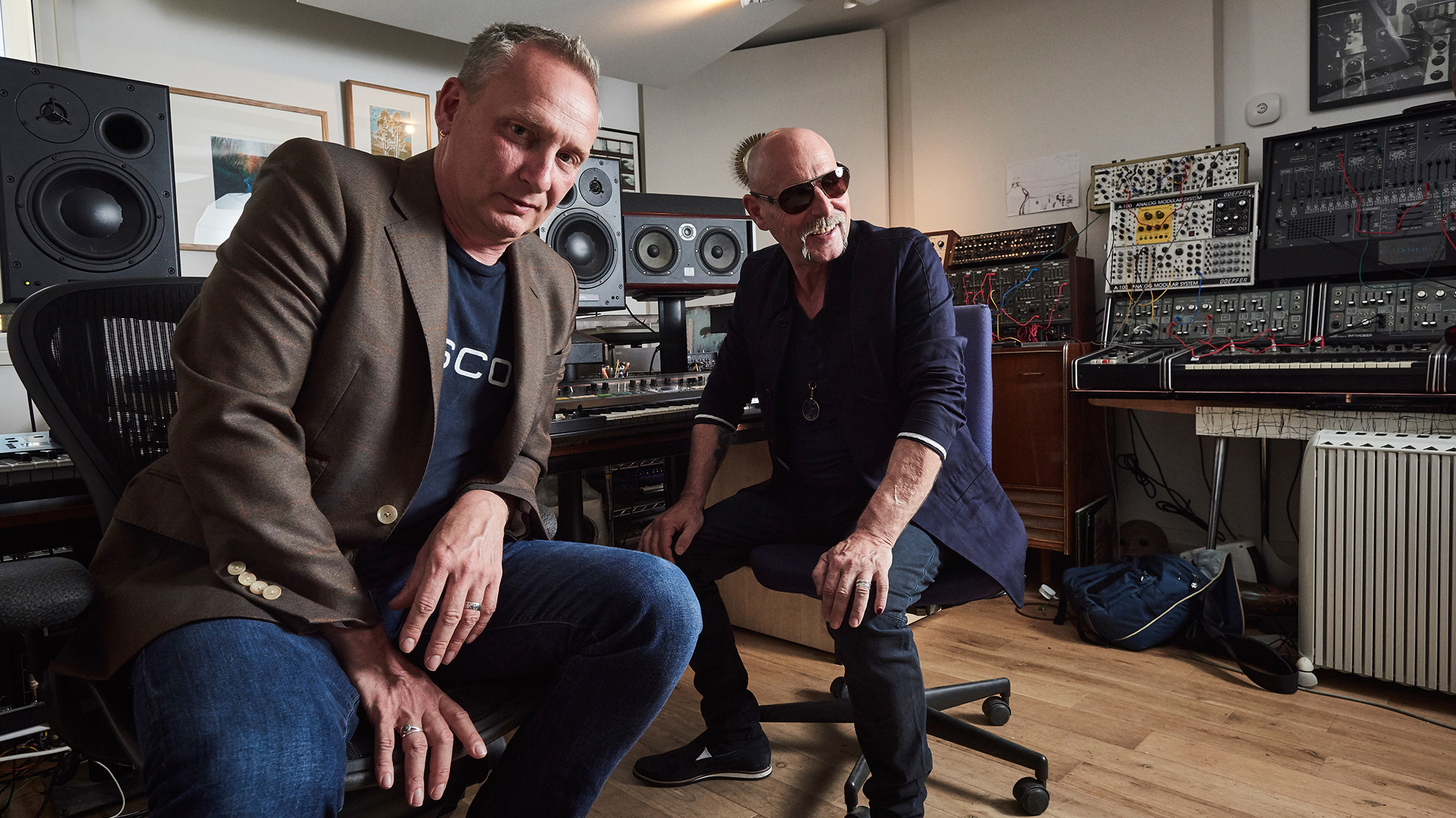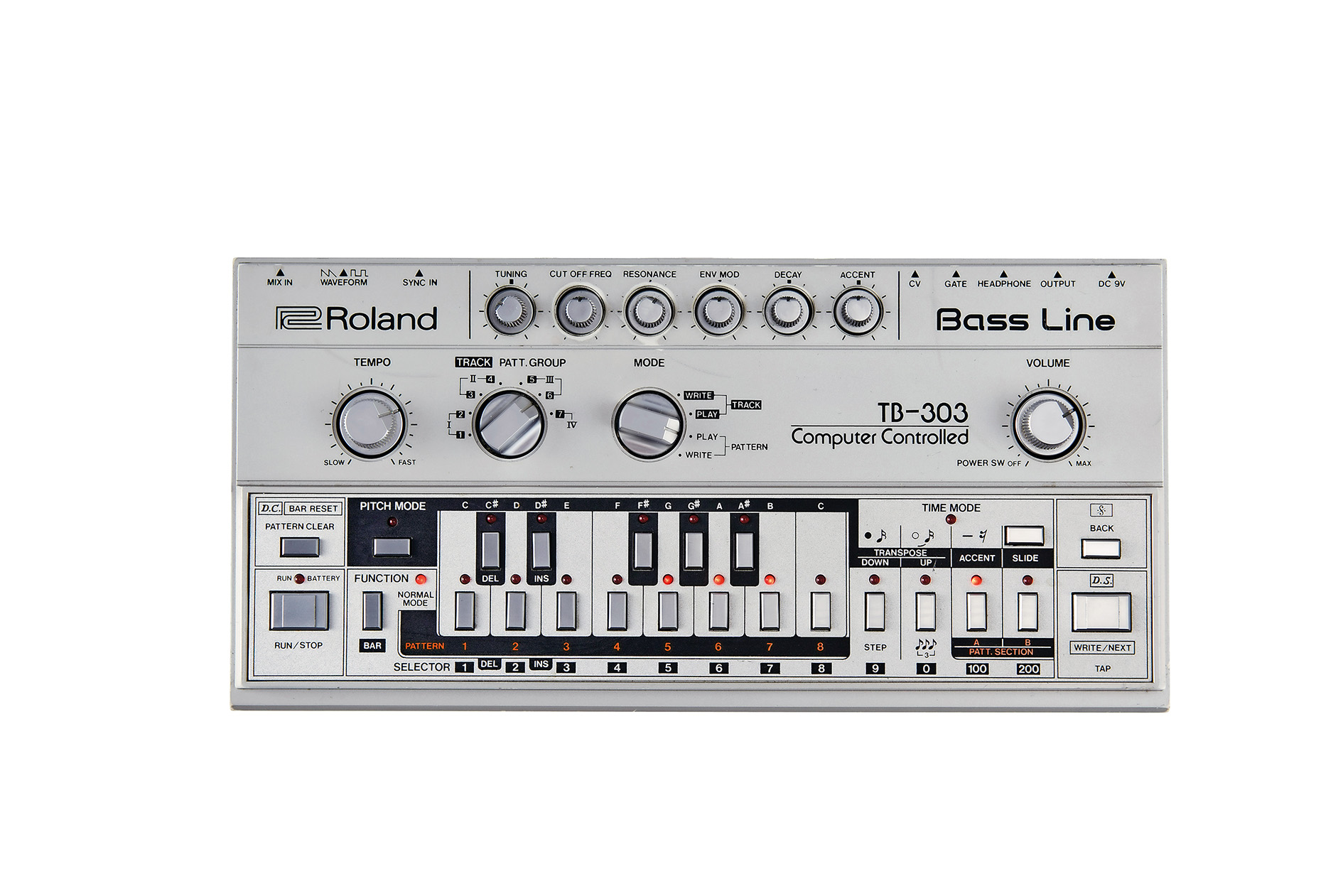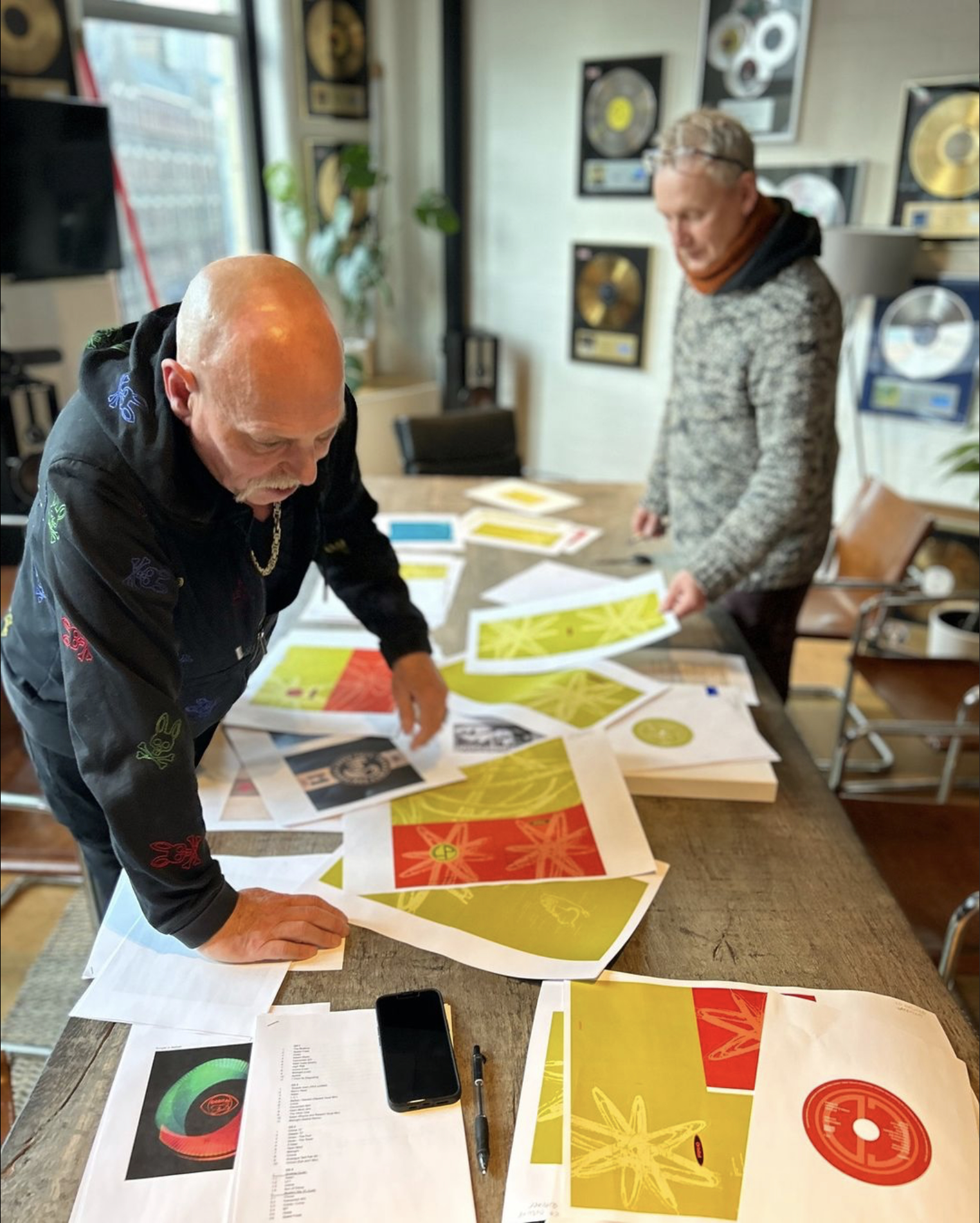Orbital on recording The Green Album: "We didn’t have multi-tracking equipment, so we’d get everything working and just run it out live. Any manipulation or synth magic would happen as it was going down - if you didn’t like it, you’d do it again"
Phil and Paul Hartnoll talk us through the debut album that started it all, track by track

Funny, then, that it all begins with a ‘Chime’. Orbital’s legendary track was indeed the sound of something new being announced and ushered in – the arrival of the brothers Hartnoll, and a new age of dance music.
Industry bods took note of the UK’s answer to Rhythim Is Rhythim’s Strings of Life, and the next sound was chequebooks being flung open. As the dust settled, Phil and Paul Hartnoll signed with Pete Tong’s FFRR, as advances were dangled.
“I was over the moon,” says Paul “I could live for a year and a half off that money. Before, I’d been dishwashing. Now, we could concentrate on making music full-time, and buy some gear.”
Putting in studio shifts in their newly kitted-out space in their parents’ pub, Phil and Paul got to work putting together one of the most seminal debuts in dance music history.
“I couldn’t believe that we could just write music all day,” says Paul, with regards to the pair jamming out live sessions, adding soon-to-be iconic melodies and drum programming in on-the-fly.
You might not get that same sound again the next day. So, we’d do long sessions. Many times, going to bed at seven in the morning. But, we loved it.
“We didn’t have any multi-tracking equipment,” he says. “So, we’d get everything working in the studio and just run it out, live. Any manipulation or synth magic would happen as it was going down. And, if you didn’t like it, you’d do it again.”
Inspired by a love of early Warp records, chugging Chicago house and choice Belgian new beat, the siblings sonically experimented with their new Korg Wavestation, Oxford OSCar, and their workhorse 303 – all the while, propelled by fuel from their favourite fast food joint. “We’d always nip out to Hei’s Chinese food and fish and chip takeaway,” says Phil. “That really kept us going.” Full of vegetable chow mein, egg-fried rice, chips and “the best curry sauce in the universe”, the pair worked until each track was done.
Want all the hottest music and gear news, reviews, deals, features and more, direct to your inbox? Sign up here.
“That was just how you did it, back then,” says Paul. “You might not get that same sound again the next day. So, we’d do long sessions. Many times, going to bed at seven in the morning. But, we loved it.”
Orbital’s self-titled debut, aka The Green Album, is now available as a brand new, remastered boxset, via London Records.
In the studio with Paul Hartnoll

“We were using the Atari (ST). And the whole thing was recorded onto the brand new DAT machine that we just bought, in stereo. We bought a Korg Wavestation and an [Oxford] OSCar, some cheap effects units and a Studiomaster 16-channel mixing desk.
“Then we had a [Roland] R-8 drum machine, and a [Roland] SH-09. A Yamaha DX100. Tandy PZM microphones for recording outside. And we had to buy an [E-mu] Emax 2. Oh, and a [Roland TB-] 303, which we liked to experiment with. We’ve had that since the very beginning.
“All 303s have a mind of their own, too. If you take the batteries out, they make their own patterns up, or have that ‘powering down’ sound, which you’ve heard in other people’s records. That sound that happens when the 303 runs out of batteries. The first time it happens, you go, ‘Oh fuck! That’s how they do it’. So, that’s always fun to do.”
Track by track with Phil and Paul Hartnoll
The Moebius
Paul Hartnoll: “I remember the feeling of meeting at our parents’ house and working from there, because they ran a pub. That was our HQ. I just remember arriving with that really warm, glowing feeling of – God, this is our day job now, writing music.
“When we started this track, I just remember it being the morning time. And it feeling really strange that it was valid, that you could just write music all day.”
Phil Hartnoll: “We used the [Korg] Wavestation for this track. There’s a lot of the Wavestation here.”
Paul Hartnoll: “Yeah, lots of Wavestation on The Moebius. And I remember arriving and Phil also had the [Oxford] OSCar going, ‘Bow! Bow! Bow!’ and a [Roland] R-8 drum pattern. And I said, ‘Okay, right, let’s get cracking with that!’ Then we had the Wavestation magic over the top.”
Speed Freak
Paul: “This was a morning track, too. And it’s called Speed Freak because it doesn’t hold still. It’s just jumping around the whole time.
“Speed? That was the ‘drug du jour’ of Kentish bikers and hippies alike. But you would have to go up to Tunbridge Wells to get things like that, I believe.”
Phil: “I wouldn’t know.”
Paul: “I wouldn’t know.”
Phil: “I used to get mine from the London School of Economics.”
Paul: “Oh, nice. It was either that, or the football hooligans in the Vine Tavern.”
Phil: “Yes, that’s why it’s called that. It was kinda like your mind when you’re on speed. The sort of amphetamine that a doctor might prescribe to you.”
Paul: “I remember our mum was there when we were doing that one, because it was her day off. Probably going ‘It’s a bit loud’, and making us cups of tea.”
Oolaa
Paul: “That one was heavily influenced by the Belgian new beat style, with those kinds of…”
Phil: “Trumpets.”
Paul: “Yeah, trumpets. And bands like Front 242, and things like that.
“And then our mate, Johnny, used to come around a lot, and he was a glorious cup-of-tea-maker. And he would just sit around while we were writing music, and just enjoy it and make comments, that kind of thing.
“And he was looking through our pile of singles, because my mum used to collect all the seven-inches off the jukebox in the pub. And he went, ‘Oh, yeah. Look. Check this one out. There’s a good sample on the b-side of this Jeff Wayne War Of The Worlds 45. And we went, ‘Yeah, cracking sample’. And it just worked a treat.”
Desert Storm
Paul: “Named after the conflict. We were just having our dinner and it came on the news. And we were like, ‘Fuck!’ And just named the track after it. It just seemed to fit.”
Phil: “There wasn’t an overarching theme to the album, though. It was a collection of individual songs.”
Paul: “First albums are kind of your personal ‘best of’, aren’t they? Like, ‘Oh, we’ve got to make an album, let’s just see all these tracks that we’ve written over the years – let’s just use that one. Let’s develop this one’, you know? But we did write a lot of fresh stuff for this album as well – Desert Storm being one of them.
“It’s a really long jam. I mean, it’s 11 minutes on the album, but the full jam was way longer. That’s why it fades up and out.”

Fahrenheit 303
Paul: “We did three tracks with a [Roland] 303 bassline that we really liked. I think we’d just said, ‘Let’s just do three tracks in a day’, or whatever. And one of them was Choice. One of them was Fahrenheit 303. And the other one never made it.
“And so, you’ll notice it’s the same bassline in both tracks, but it’s used in a slightly different way. It’s used as a high pitch sound, running a [Roland] SH-09, on Choice. And then it’s you know, this raw, unadulterated 303 in Fahrenheit 303.
“What was that track all about? I don’t know. It was because we were trying to do different things. It was like we thought, ‘Oh, we haven’t done a house version. Let’s do a house one’. And, you know, to me, it’s got that kind of Chicago house swagger.”
Steel Cube Idolatry
Paul: “That was another new one. Little bit of Wavestation, but the primary sound is the OSCar doing its additive synthesis. And that’s the one and only time we ever experimented with it. It was really great, but we never ever did it again. I think because it’s a ballache to programme, but it was good fun.
“Again, trying fresh perspectives. Inspired by all the early Warp Records stuff. Same kind of vibe.
“The vocals came from some samples that Sasha had given to us when he remixed Midnight. We just chucked them in and went, ‘Yeah, that works’.
“The track name came from journalist Paul Lester who reviewed a gig and absolutely trounced us, saying we were ‘Two of the most boring looking lab technicians’, and that we probably have track titles like, I Dream of Plexiglass and Steel Cube Idolatry. We just thought, ‘Great title!’, and used it.”
High Rise
Paul: “For this one we worked out that you could transpose a 303. So we said, ‘Let’s just keep going up and up and up! And, as we get more frantic – does it build?’ So, that was our attempt to do that.
“I mean, High Rise? It doesn’t take much working out to think, ‘Okay, let’s name it after a tall building’, you know? And it’s quite [’70s animated kids show] Mary, Mungo and Midge, you know? With that, ‘Diddly-diddly-diddly-dee’ when they used to go up the tower [laughs].
“And then we got an actual recording of a lift. I had a couple of Tandy PZM [microphones] that I had stuck to a board, to get that kind of ‘virtual head’ feeling. And, the best lift I knew in Sevenoaks was from the car park in Waitrose, up to the main floor. So, this has a recording of that Waitrose lift, in Sevenoaks.”
Chime (Live)
Paul: “For the album, we wanted to include versions of the songs that people wouldn’t have already had if they’d bought the singles, so this is a live version. Value for money was of paramount importance to me, you know? I was coming from a point where, if I wanted to go out and buy a new record, I was working, like, three shifts in a pizza restaurant, doing the washing up. So, the idea of putting singles on records to me seemed like a rip-off.
“We had a live version of Chime. We’d record our live shows. That just was something that we used to do a lot. And it just seemed good to put that on. So, we put a couple of live tracks on for the singles, because we thought it would just be better than putting the single version on.”

Midnight (Live)
Paul: “Components-wise this version is pretty similar to the single. It’s a rawer version, because it’s live. But, I think that it follows, roughly, the same kind of shape. That’s what you tend to do, live, you know? You follow the big brushstrokes.”
Phil: “It depends how long you’ve been playing it, over the years.”
Paul: “That would have been quite fresh, as we’d have just done it. And then we’d have just been playing it live. So, it was fairly similar.
“But, I have noticed, because I’ve been forensically checking all this stuff out for playing it live, now. And they are quite different in their arrangements. The sections are all different. And drums come in at different points and things like that. But, ultimately, they’re similar. They’re as similar as two different live shows might be.”
Belfast
Paul: “The story behind this was that we got asked by David Holmes to go and play in Belfast. He’d got a number for us from the Chime 12”.
“Bear in mind, I’d never left Sevenoaks, only to go on holiday. So, we agreed, and flew from Luton, and they were absolutely brilliant. They gave us a really good tour, and took us to a lovely pub on the night before, and then we played in the Art College. It was our best gig ever. And our first encore. They just wouldn’t let us get off stage.
“We stayed at David’s mum’s house. And the next day he asked if we had any demo tapes. I actually had a couple and gave him a demo that he loved, and we named it Belfast as it was so positive.”
Phil: “It was such a beautiful track for such a beautiful night. There were Catholics, Protestants – all mixed together.”
I Think It’s Disgusting
Paul: “And we end on this secret track. It was just something fun to do, back then. It’s just a little loop that goes around. I mean, the actual real track is probably about five minutes long. And it’s here just it because it sounds like a bit of muzak. It’s a bit of an easy listening loop.
“I just did a big kind of Hammond organ style solo on my [Yamaha] DX100 over the top of it and made it sound really scratchy and distant in the background.”


Future Music is the number one magazine for today's producers. Packed with technique and technology we'll help you make great new music. All-access artist interviews, in-depth gear reviews, essential production tutorials and much more. Every marvellous monthly edition features reliable reviews of the latest and greatest hardware and software technology and techniques, unparalleled advice, in-depth interviews, sensational free samples and so much more to improve the experience and outcome of your music-making.
